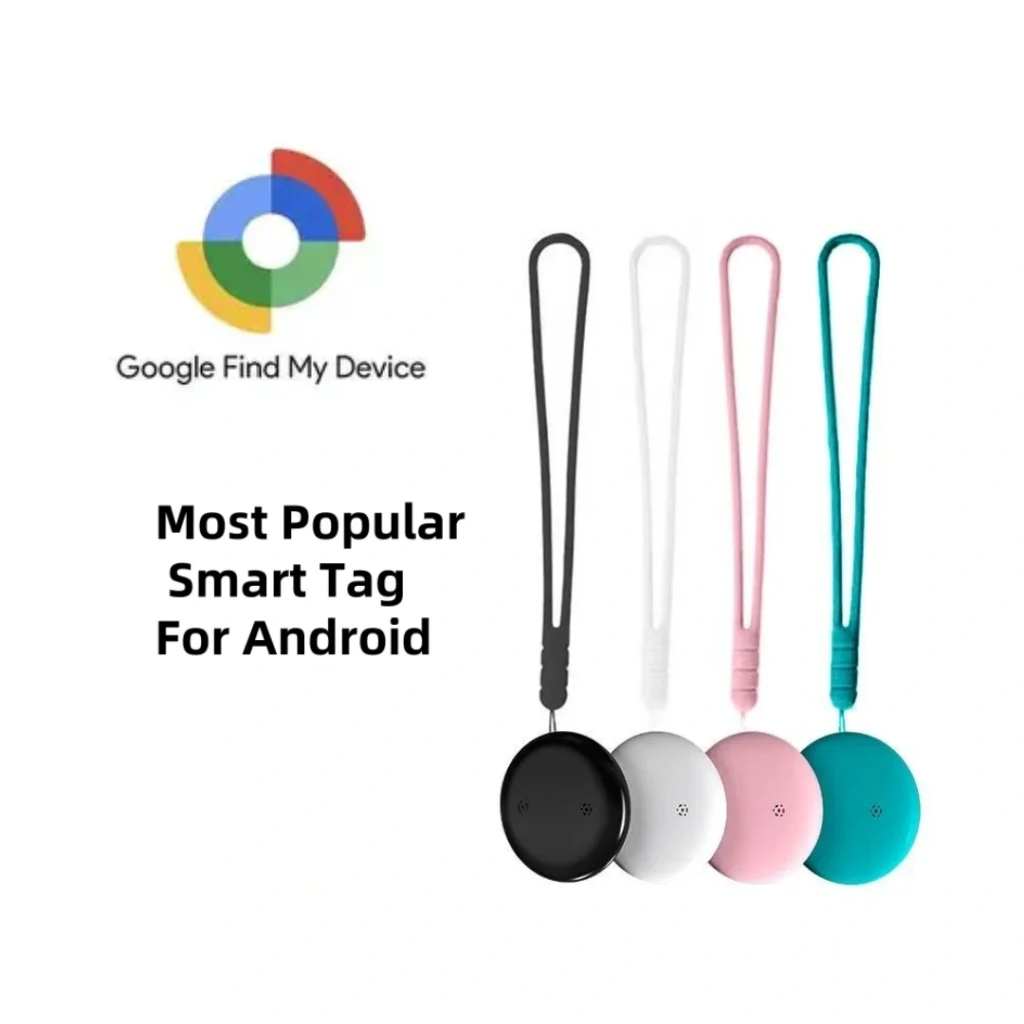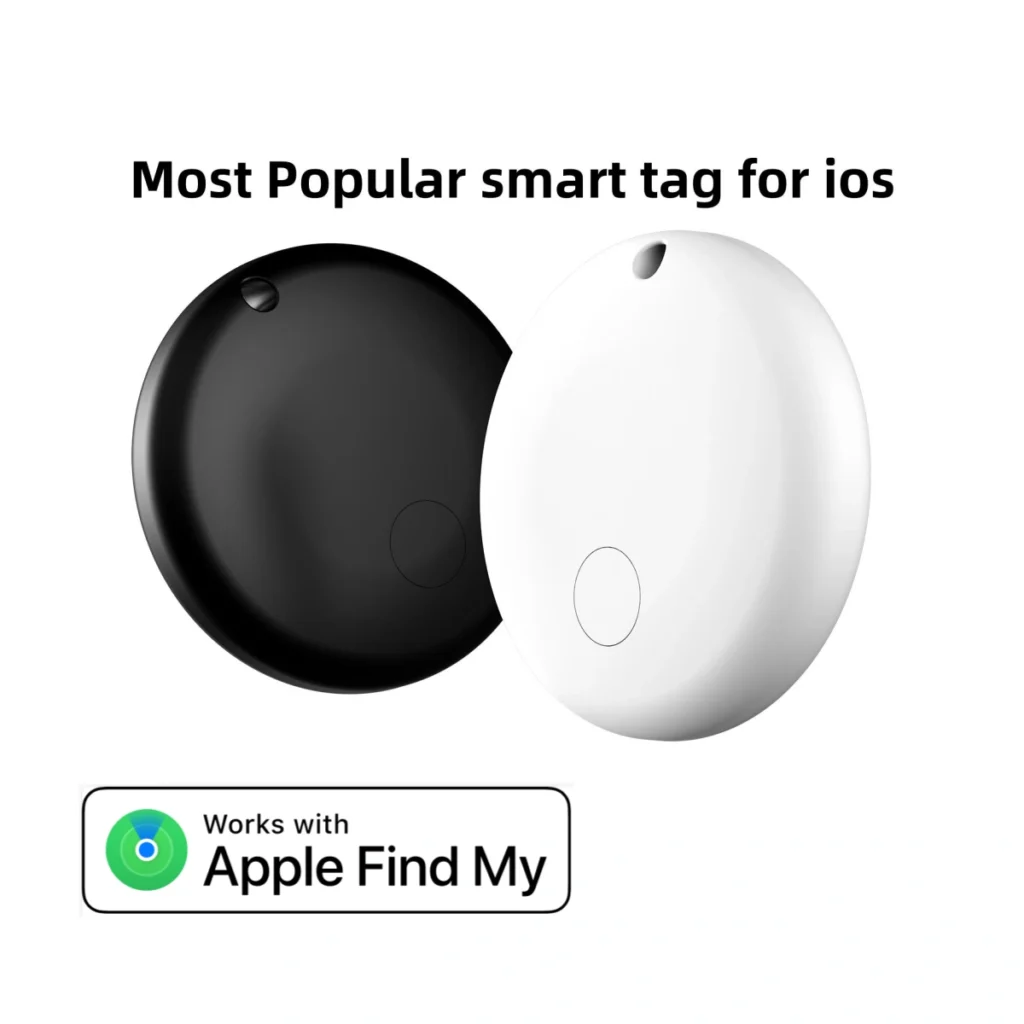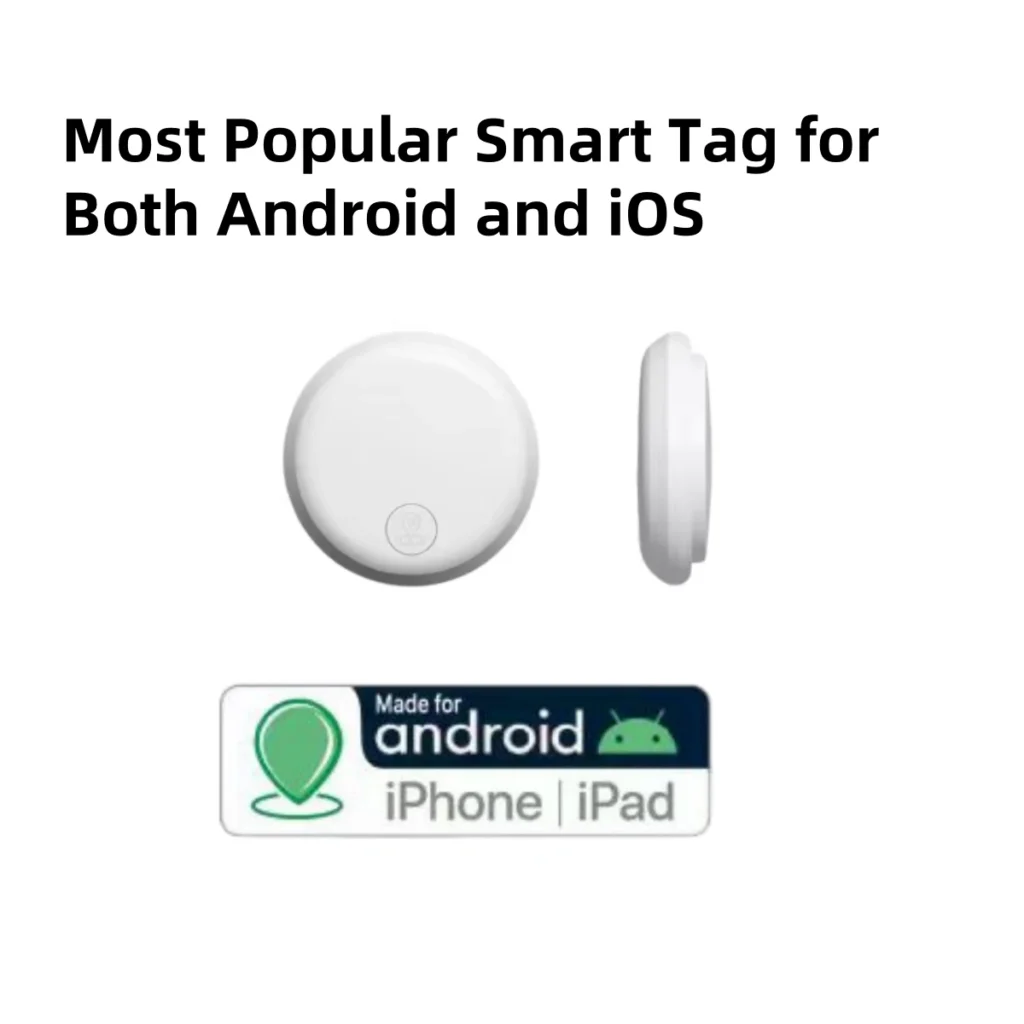Introduction: the smart-tag puzzle
Today, smart tags have permeated many aspects of our lives — from the daily need to prevent keys and wallets from being lost, to the tracking of luggage while traveling, and even the safety of children’s backpacks and pet collars. But users are often caught in a dilemma: the Apple AirTag is only compatible with Apple devices, Samsung’s Galaxy Smarttag and other android-only models aren’t iOS compatible, and dual-system tags are in doubt as to whether they’re really useful. In this paper, the core differences of the three types of tags are analyzed from three aspects: technical characteristics, use scenarios and actual experience, so as to help users find the choice of adapting to their needs.
Are dual iOS and Android tags better than separate Apple or Android tags? Full analysis
![]()
The characteristics of single system tags: Precise experience under ecological binding
1. Apple AirTag (iOS only)
Compatibility: only for iPhone, iPad, Mac and other Apple devices, completely dependent on the“Find My” ecosystem, requires iOS 14.5 and above.
Core Technologies and strengths:
Positioning accuracy: equipped with U1 ultra-wideband chip, close to achieve centimeter-level positioning, with the iPhone camera can be“Guided to find”(screen direction and distance) ;
Network coverage: thanks to a crowdsourced network of more than 1 billion Apple devices around the world, tags can be uploaded anonymously from nearby Apple devices, even when they’re out of Bluetooth range
Security: Built-in anti-tracking features, strange air Tag will trigger a long time to follow the iPhone alerts, and the Tag can not be activated after malicious reset;
Ecological linkage: with apple wallet, Shortcut command linkage, such as clicking on the AirTag to unlock the MAC, or automatically triggered when lost home sharing member alert.
![]()
Cons: Android devices are completely unrecognized and hard to share across the home; they cost about $29 each and come with a special hook ($4 to $14 extra) .
2. Android-specific tags (take the Samsung Galaxy Smarttag for example)
System compatibility: primarily for Samsung devices, with support for Galaxy phones and tablets (Android 11 and up) , non-samsung androids can access the full functionality via Google’s“Find My Device”, which is available on Android phones, support for global Google coverage.
Core Technologies and strengths:
Functional linkage: with Samsung ecological depth binding, such as Tag loss can trigger Galaxy phone ringtones, Smart TV pop-up alerts, and even linkage Samsung refrigerator display position;
How to find it: it supports“Augmented reality”(location by camera in AR mode) , and some models (like Galaxy SmartTag +) support ultra-wideband (UWB) technology, which gives near-airtag accuracy
Cost-effective: it costs about $29.99 and is compatible with Samsung’s original lanyard, which costs about the same as AirTag.
Cons: iOS devices can’t connect; non-samsung Android phones can use basic lookups, but the eco-friendly experience (like quick wake-up between devices) is weaker than on Samsung native devices.
3. iOS and Android dual-os tag features: cross-platform flexibility

1. System compatibility
Support for iOS (usually 12.0 and up) and Android (8.0 and up) , no device differentiation, cross-platform location and sharing via Bluetooth or network, and support in mainstream locations around the world.
2. Market segmentation and brand representation
| Category | Principles of technology | Stands for make and model | Applicable scenarios |
| System-level dual systems | Access both Apple Find My and Google Find My Device | Tile Mate, Chipolo ONE | Global use, dual ecosystem coverage |
| Stand-alone App-type dual system | Dual-system adaptation is realized through the manufacturer’s own App | Tile Sticker, Chipolo GO | Global use, support multi-device App synchronization |
3. Advantage: addressing cross-system pain points
Cross-platform sharing: if there are iOS and Android users in the family or team, they can co-manage the same Tag (e.g. family car key Tag, parents can check location on both iPhone and Android)
Flexible scene: when traveling, the dual-system Tag is put into the suitcase, and colleagues can track the trip in real time with Android and family with iPhone, to avoid the single system“Information Island”;
Feature expansion: independent App tags can add additional features such as historical track query, low battery alert, one-click help (Trigger Tag Sound + App push) , more flexible than single system tags.
4. The downside: trade-offs between experience and cost
Higher prices: generally $24.99-$39.99 per model, some high-end models (such as the waterproof Tile Pro) can go for $49.99,10%-30% more than the base bill system label
Positioning accuracy differences: most dual-system tags without UWB chip, short-range positioning accuracy is only 1-3 meters, weaker than AirTag and Samsung Smarttag + ;
Coverage depends on ecology: system-level dual-system tagging for location coverage relies on the crowdsourced networks of Apple Find My and Google Find My devices, location response can be delayed in remote areas, such as areas where few people use smart devices.

Comparative analysis: three types of label core indicators dismantling
| Dimensions of contrast | Apple AirTag (iOS only) | Android-only Tag (Samsung for example) | Dual system Tag (system level/standalone App) |
| System compatibility | iOS 14.5 + only | Android 11 +/Google service support devices | iOS 12.0 +/Android 8.0 + |
| Coverage | Global (apple crowdsourcing network) | Global (Samsung + Google Crowdsourcing Network) | Global (Dual ECOSYSTEM + App Network) |
| Positioning accuracy | Centimeter level (U1 chip) | Meter/centimeter (some UWB models) | Meter (no U1 chip) |
| Security | Anti-tracking alerts + can not be reset maliciously | Unknown tracking detection (Samsung) | Anti-tracking alerts (Tile/Chipolo, etc.) |
| Feature extensibility | Built-in (not extensible) | Samsung ecolink (non-samsung limited) | Apps can add historical tracks, one-click help, etc. |
| Price (per unit) | About $29 | About $29.99 | $24.99-$49.99 |
| Who can apply | Apple eco-users | Samsung bucket users | Cross-system family/team, multi-device users |
Conclusions and recommendations: on-demand selection is more important
Dual-system tags aren’t“Definitely better” but“More adaptable to a wide range of scenarios,” and should be chosen with a combination of device ecology, usage scenarios, and budget:
1. The case of the priority menu system labels
Individual users: if only using the iPhone (and no cross-system sharing requirements) , Apple AirTag is the optimal solution, centimeter-level positioning + wide coverage network can meet the daily anti-lost;
Android users: If You’re a Samsung Phone + Tablet + Smart Device User, the Galaxy Smarttag (especially the UWB Smarttag +) eco-friendly experience is smoother and more cost-effective
Limited budget: basic bill system tags (such as AirTag, entry-level Samsung Smarttag) affordable, and positioning accuracy, security has been able to meet the basic anti-loss requirements such as keys, wallets.
2. Dual system tags are preferred

Cross-system family: if parents use iPhone, children use Android, need to share car keys, house keys Tag, dual system can avoid“One can see, one can not see” embarrassment;
Multi-device office: iOS and Android devices coexist in the team, need to track briefcases, meeting equipment, dual-system tag can be shared by all the location, no need to distinguish between device types;
Frequent cross-device use: individuals hold both iPhone and Android backups, and dual-system tags can be used to view locations on both devices simultaneously without the need to purchase two additional single-system tags.
3. Additional considerations
Privacy security: choose tags that support“Anti-tracking alerts”(e. g. Apple AirTag, Tile) to avoid being maliciously used to locate tracking;
Battery life considerations: three types of tags are in the battery life of about 1 year (button battery) , dual-system tags to adapt to the dual-platform protocol, power consumption slightly faster, it is recommended to regularly check the battery through the App;
Environmental adaptation: If you need to use in outdoor, swimming pool and other scenarios, you can choose waterproof grade IP67 and above models (such as Tile Pro, Samsung Smarttag) , to avoid water damage.
In short, the core value of smart tags is“Matching demand”-single-system tags win in precision and ecological depth, dual-system tags win in flexibility and cross-platform sharing, and there is no need to blindly pursue“Dual-system”, it is the best choice to fit its own device ecology and use scenarios.







